50g
Showing 651–700 of 1859 results
-
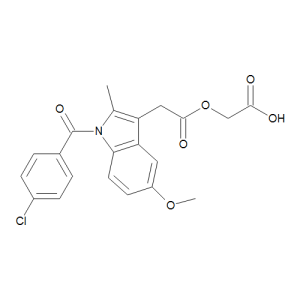
Acemetacin
$599.44 Add to cart View Product DetailsMolecular Formula : C21 H18 Cl N O6
-

Acetarsone
$666.71 Add to cart View Product DetailsMolecular Formula : C8H10AsNO5
-
Acetoacetamide
$78.49 Add to cart View Product DetailsMolecular Formula : C4 H7 N O2
-

Acetohydroxamic Acid
$140.59 Add to cart View Product DetailsMolecular Formula : C2 H5 N O2
-

Acetoin (~90%)
$88.84 Add to cart View Product DetailsMolecular Formula : C4H8O2
-

Acetylenedicarboxylic Acid
$163.88 Add to cart View Product DetailsMolecular Formula : C4H2O4
-
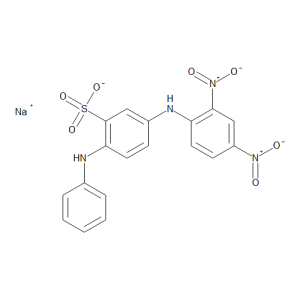
Acid Orange 3, Technical Grade
$189.75 Add to cart View Product DetailsMolecular Formula : C18 H13 N4 O7 S . Na
-

AD-mix-Beta (Technical Grade)
$220.80 Add to cart View Product DetailsMolecular Formula : No Data Available
-

Adenine Hemisulfate
$97.46 Add to cart View Product DetailsMolecular Formula : 2[C5 H5 N5] . S O4 H2
-
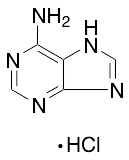
Adenine Hydrochloride
$130.24 Add to cart View Product DetailsMolecular Formula : C5H5N5 . HCl
-

Adenosine 5′-Monophosphate
$181.99 Add to cart View Product DetailsMolecular Formula : C10 H14 N5 O7 P
-
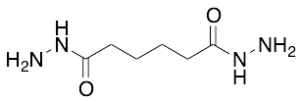
Adipic Acid Dihydrazide
$171.64 Add to cart View Product DetailsMolecular Formula : C6 H14 N4 O2
-
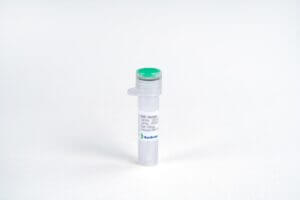
Adiponectin, Human(CHO-expressed)
$194.06 Add to cart View Product DetailsAdiponectin is an important adipokine involved in the control of fat metabolism and insulin sensitivity. It is synthesized exclusively by adipocytes and secreted into plasma. It antagonizes THF-alpha by negatively regulating its expression. It also inhibits endothelial NF-kappa-B signaling through a cAMP-dependent pathway. Adiponectin can form low molecular weight complexes (LMW), middle molecular weight complexes (MMW) and higher molecular weight complexes (HMW). These bind to various growth factors, such as HBEGF, PDGFB and FGF2, and play a role in cell growth, angiogenesis and tissue remodeling.
-

Adiponectin, Mouse
$194.06 Add to cart View Product DetailsAdiponectin is a hormone mainly produced by adipocytes. Adiponectin forms a homotrimer and exists as higher order multimers in vivo. The receptors of Adiponectin are seven transmembrane G protein coupled receptors: Receptor 1 is expressed in skeletal muscle and Receptor 2 in liver. Adiponectin receives a lot of attention because of its anti-diabetic, anti-atherosclerotic, and anti-inflammatory properties. Adiponectin increases the expression of molecules involved in fatty acid transport, combustion of fatty acid, and energy dissipation, and increases insulin sensitivity of the body. Decreased levels of Adiponectin are associated with hypertension, cardiovascular diseases, and metabolic syndromes. Therefore, Adiponectin has promising potential as a pharmacological agent.
-

Adiponectin/Acrp30, Human
$194.06 Add to cart View Product DetailsAdiponectin is an important adipokine involved in the control of fat metabolism and insulin sensitivity. It is synthesized exclusively by adipocytes and secreted into plasma. It antagonizes THF-alpha by negatively regulating its expression. It also inhibits endothelial NF-kappa-B signaling through a cAMP-dependent pathway. Adiponectin can form low molecular weight complexes (LMW), middle molecular weight complexes (MMW) and higher molecular weight complexes (HMW). These bind to various growth factors, such as HBEGF, PDGFB and FGF2, and play a role in cell growth, angiogenesis and tissue remodeling.
-

AITRL, Mouse
$224.25 Add to cart View Product DetailsActivation-Inducible TNF-Related Ligand (AITRL), also known as Glucocorticoid-Induced TNF-Related Ligand (GITRL), belongs to the tumor necrosis factor superfamily (TNFSF). AITRL is a Type II single transmembrane protein and shares low conservation within the extracellular domain with other TNFSF members. AITRL is expressed on macrophages, immature and mature dendritic cells and B cells. Its receptor, Activation-Inducible TNFR family Receptor (AITR), is expressed on T lymphocytes, natural killer (NK) cells, and antigen- presenting cells. After binding by AITRL, AITR can be released. AITR activation increases resistance to tumors and viral infections and is involved in autoimmune and inflammatory processes. In addition, activated AITR increases TCR-induced T cell proliferation and cytokine production and rescues T cells and NK cells from apoptosis.
-

Allyl Acetate
$81.94 Add to cart View Product DetailsMolecular Formula : C5H8O2
-

Allyl Bromide (Stabilized with Propylene Oxide)
$86.25 Add to cart View Product DetailsMolecular Formula : C3 H5 Br
-
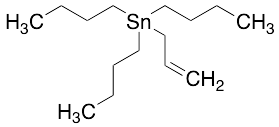
Allyltributyltin
$337.24 Add to cart View Product DetailsMolecular Formula : C15H32Sn
-

Allyltrimethylsilane
$302.74 Add to cart View Product DetailsMolecular Formula : C6 H14 Si
-

Alpha-Cellulose (powdered)
$56.93 Add to cart View Product DetailsMolecular Formula : (C6H10O5)n
-

Alpha-D-Glucoheptonic Acid Sodium Salt
$60.38 Add to cart View Product DetailsMolecular Formula : C7H13NaO8 . 2(H2O)
-
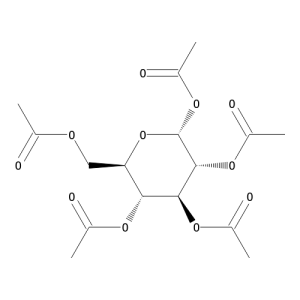
Alpha-D-Glucose Pentaacetate
$1,042.76 Add to cart View Product DetailsMolecular Formula : C16 H22 O11
-

Alpha-Tetralone
$83.66 Add to cart View Product DetailsMolecular Formula : No Data Available
-

Alpha,2,4-Trichloroacetophenone
$166.46 Add to cart View Product DetailsMolecular Formula : C8 H5 Cl3 O
-

Aluminum Isopropoxide
$144.04 Add to cart View Product DetailsMolecular Formula : C9H24AlO3
-

Aluminum Sulfate Hydrate
$144.04 Add to cart View Product DetailsMolecular Formula : 2 Al . 3 O4 S . H2 O
-

Amaranth (>85%)
$219.94 Add to cart View Product DetailsMolecular Formula : C20 H11 N2 O10 S3 . 3 Na
-
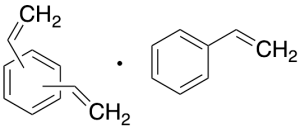
Amberlite® XAD®-2
$114.71 Add to cart View Product DetailsMolecular Formula : No Data Available
-

Amberlyst® A26 Hydroxide Form
$62.10 Add to cart View Product DetailsMolecular Formula : No Data Available
-

Aminobutanol
$326.89 Add to cart View Product DetailsMolecular Formula : C4 H11 N O
-

Aminoguanidinium Bicarbonate
$106.09 Add to cart View Product DetailsMolecular Formula : C H6 N4 . C H2 O3
-
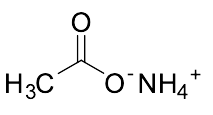
Ammonium Acetate
$163.01 Add to cart View Product DetailsMolecular Formula : C2 H3 O2 . H4 N
-
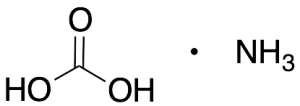
Ammonium Bicarbonate
$65.55 Add to cart View Product DetailsMolecular Formula : CH5NO3
-
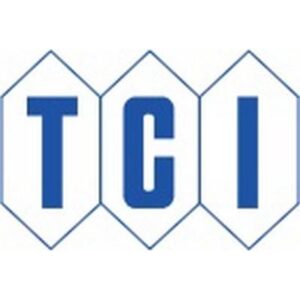
Ammonium Cerium(IV) Nitrate
$54.23 Add to cart View Product DetailsAmmonium Cerium(IV) Nitrate
-

Ammonium Cerium(IV) Nitrate
$144.04 Add to cart View Product DetailsMolecular Formula : Ce . 4 N O3 . 2 H N O3 . 2 H3 N
-

Ammonium Formate
$112.99 Add to cart View Product DetailsMolecular Formula : CH2O2 . NH3
-

Ammonium Iron(II) Sulfate Hexahydrate (Mohr’s Salt)
$62.10 Add to cart View Product DetailsMolecular Formula : Fe . 2 H O4 S . 6 H2 O . 2[N H3]
-

Ammonium Molybdate Tetrahydrate
$121.61 Add to cart View Product DetailsMolecular Formula : 7 Mo . 24 O . 4 H2 O . 6 H4 N
-
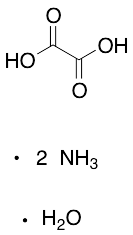
Ammonium Oxalate Monohydrate
$56.06 Add to cart View Product DetailsMolecular Formula : C2H2O4 . 2H3N . H2O
-
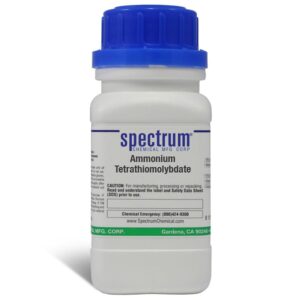
Ammonium Tetrathiomolybdate
$974.76 Add to cart View Product DetailsAmmonium Tetrathiomolybdate
-

Amphiregulin, Human
$86.25 Add to cart View Product DetailsAmphiregulin is a member of the EGF family of cytokines, which comprises at least ten proteins including EGF, TGF-α, HB-EGF, Epiregulin, Tomoregulin, Neuregulins and the various heregulins. Through the EGF/TGF-α receptor, it stimulates growth of keratinocytes, epithelial cells and some fibroblasts. Amphiregulin also inhibits the growth of certain carcinoma cell lines. Synthesized as a transmembrane protein, Amphiregulin’s extracellular domain is proteolytically processed to release the mature protein.
-

Ampicillin Sodium Salt
$279.45 Add to cart View Product DetailsMolecular Formula : C16 H18 N3 O4 S . Na
-
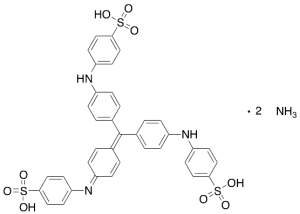
Aniline Blue Diammonium Salt (Technical Grade)
$130.24 Add to cart View Product DetailsMolecular Formula : C37H29N3O9S3 . 2NH3
-

Anisaldehyde
$149.21 Add to cart View Product DetailsMolecular Formula : C8 H8 O2
-
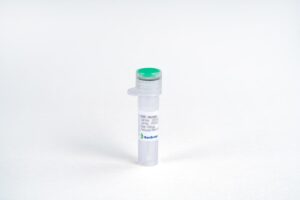
Annexin V, His, Human
$142.31 Add to cart View Product DetailsANXA5, also known as annexin V, is a member of the annexin family of calcium-dependent phospholipid binding proteins which are involved in membrane-related activity along exocytotic and endocytotic pathways. ANXA5 is a phospholipase A2 and protein kinase C inhibitory protein with calcium channel properties. It functions in signal transduction, inflammation, cell growth and differentiation. ANXA5 is an anticoagulant protein that acts as an indirect inhibitor of the thromboplastin-specific complex, which is involved in the blood coagulation cascade. There are at least ten different annexins in the mammalian species. Annexins do not contain signal peptides, yet some annexins (A1, A2 and A5) appear to be secreted in a physiologically regulated fashion.The binding of labeled ANXA5 to phosphatidylserine is commonly used as a marker of apoptosis.
-

Antimony(III) Oxide
$77.63 Add to cart View Product DetailsMolecular Formula : Sb2O3
-
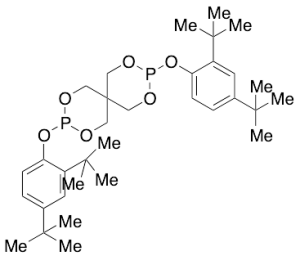
Antioxidant 24
$119.03 Add to cart View Product DetailsMolecular Formula : C33 H50 O6 P2
-

April, Mouse
$146.63 Add to cart View Product DetailsA Proliferation-inducing Ligand (April)) also known as TNSF13A, Tall-2, and TRDL-1, is a member of the TNF ligand (TNFL) superfamily. April is most similar to B-cell activation factor (BAFF) with which it shares 30% sequence identity, compete for two receptors, TACI and BCMA. APRIL is expressed at low levels in lymphoid tissue and is over-expressed by a number of tumors. April has a proliferative effect on both normal and tumor cell lines in vitro and in vivo. APRIL seems to be involved in the regulation of death and proliferation of tumor cells, but there are still contradictory findings regarding its overall biological effects.
-

Arsenic Oxide (As2O3)
$328.61 Add to cart View Product DetailsMolecular Formula : As2 O3






